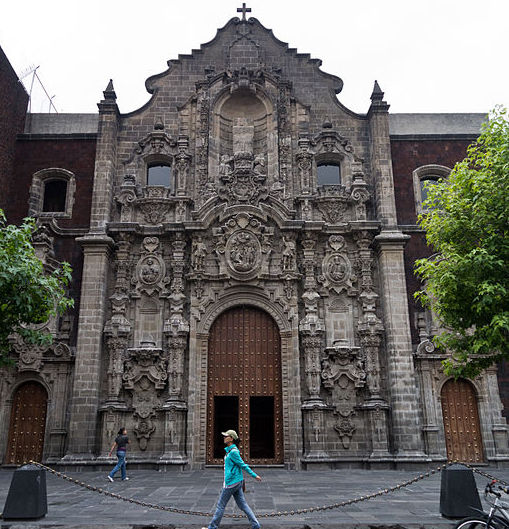
The Miguel Lerdo de Tejada Library is one of the center city’s most visible and celebrated libraries. Focused on themes in the study of economics, it’s run by the Federal Ministry of Finance and Public Credit in what is sometimes called the Old Oratory of San Felipe Neri. The collection includes 86,350 titles and 114,852 volumes.
In 1928, the Secretary of the Treasury consolidated the treasury collections from 18th and 19th century Mexico. What had been the Empress Chapel of the National Palace was converted to house the collections. This library opened to the public in 1928 and was renamed to the present name in 1957.
But as the collection grew, in 1970 it was moved into the main nave of the Old Oratory of San Felipe Neri.
Built between 1751 and 1770, the architect Ildefonso de Iniesta had been contracted by the Congregation of the Oratory of San Felipe Neri. The street had been called the Arch of San Agustín, but was renamed to San Felipe Neri at about that time. (Today its Republica de El Salvador.)
In 1702, the congregation got recognition from Pope Innocent XII of their status as an oratory. They began construction that same year and the building was opened by the viceroy Payo Enriquez de Rivera . By April of 1751, a major expansion was needed and Ildefonso de Iniesta was hired to do the project including the still awe-inspiring facade. The project was cut short by both a lack of funds and by an earthquake in April of 1768.
The oratory congregation moved then to the La Profesa Temple which was left vacant after the Jesuits were expelled from New Spain in 1767. The building then suffered serious decline, even serving as a stable for some time.
By 1857, it was housing the Arbeu Theater which operated as an important center for dramatic arts until 1954. In 1959, the building was expropriated and became federal property. By the end of the 1960s, it was restored and fitted out to house the Miguel Lerdo de Tejada Library. Much of the original Baroque facade was rehabilitated by architect Carlos Chanfón.
The 2,000m² mural, La Revolución y Los Elementos, was painted by Vladimir Viktorovich Kibalchich Rusakov, known more widely as Vlady. Working between 1972 and 1982, he also painted the side chapel, known as la Freudiana for its direct focus on the sexual revolution and psychoanalysis. The Centro Vlady in the Insurgentes Mixcoac neighborhood is dedicated to the preservation and study of his extensive work.
 biblioteca_lerdo@hacienda.gob.mx
biblioteca_lerdo@hacienda.gob.mx
 +52 (55) 3688 1100
+52 (55) 3688 1100
 http://www.hacienda.gob.mx/cultura/museo_virtual_biblioteca_lerdo/index.htm
http://www.hacienda.gob.mx/cultura/museo_virtual_biblioteca_lerdo/index.htm
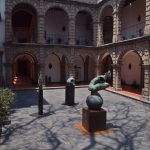
Nearest at 0.04 kms.
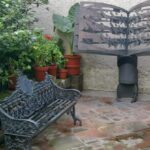
Nearest at 0.06 kms.
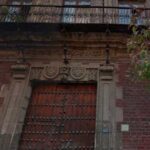
Nearest at 0.06 kms.

One of the most important sites in the city, even today, don't miss the chance to visit the Templo Mayor.
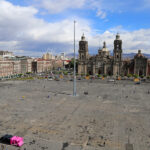
There's no center like the very center, and in Mexico City, that means el Zócalo!

The first Cathedral to have been built in the Americas.
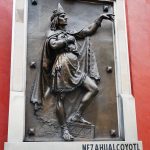
One of the most easily historical corners in the city center, it's a monument, a garden and much more.
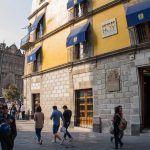
A museum dedicated to one of the oldest institutions in the hemisphere and its long role in Mexico City.